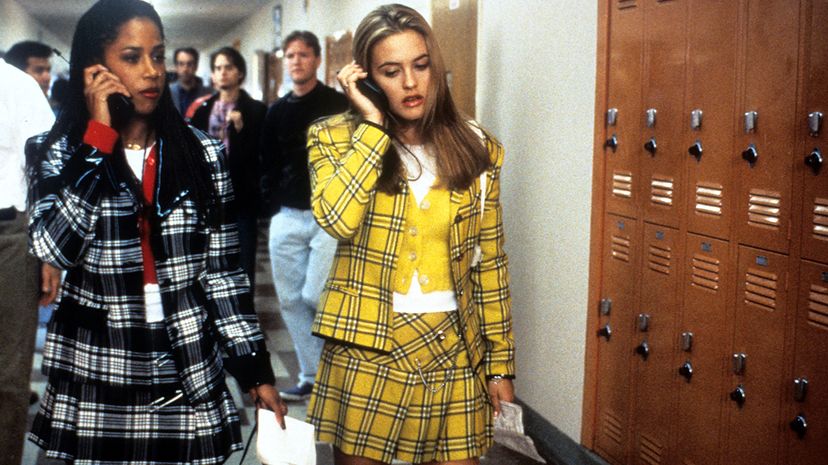 “In the 1995 film ‘Clueless,’ Stacey Dash and Alicia Silverstone played popular high school girls — hubs of their social networks. Paramount Pictures/Getty Images
“In the 1995 film ‘Clueless,’ Stacey Dash and Alicia Silverstone played popular high school girls — hubs of their social networks. Paramount Pictures/Getty Images
If you were to inoculate a historical creative person against a dangerous disease in order to save other historical creative people, would it make more sense to immunize famous recluse J.D. Salinger, or that cad Frank O’Hara?
Well, obviously the answer is the sociable O’Hara — he interacted with dozens of people every day: dancers, musicians, painters, literary critics. J.D. Salinger mostly only saw his guard dogs. Point being, given the choice, there is power in both vaccinating and educating the popular, social people in a community, as compared to doing so with the ones who hang out by themselves on the outskirts.
A new study published in the Proceedings of the National Academy of Sciences investigates how this phenomenon works in the real world. Researchers examined developing countries where the spread of infection can cost thousands of contemporary, nonhypothetical lives every year unless these people get access to education and inoculating drugs in a timely manner. The researchers collected data from 16,000 people in 17 rural villages in Uganda, focusing on how information and vaccines have historically been distributed to people in communities, and figuring out how to do it more effectively.
 “Researchers have devised a strategy for effective education and preventative treatment when fighting disease that involves identifying the most-connected and -trusted ‘hubs’ of a social network, like teachers, religious leaders or village elders.Education Images/UIG/Getty Images
“Researchers have devised a strategy for effective education and preventative treatment when fighting disease that involves identifying the most-connected and -trusted ‘hubs’ of a social network, like teachers, religious leaders or village elders.Education Images/UIG/Getty Images
Generally speaking, medicines and health information have traditionally been distributed to people with formal roles in the community: teachers, public health workers, government officials, etc. But remember: Writers Frank O’Hara and J.D. Salinger both occupied the same role, but the difference in their social reach was vast. The research team realized there is power in the way real social networks work, and public health programs can really benefit from being able to sort out the O’Haras from the Salingers.
"Everyone is a node in a social network," said lead author Dr. Goylette Chami of the Department of Pathology at Cambridge University, in a press release. "Most nodes have just a few connections. However, a small number of nodes have the majority of connections. These are the hubs we want to uncover and target in order to intentionally cause failure in social networks spreading pathogens or damaging behaviour."
For example, when infections from parasitic worms take hold in a community, conventional wisdom dictates that at least three quarters of the residents need to receive treatment in order for preventative strategies to work. But this is often easier said than done.
"The refusal of treatment by a few people can result in the destabilisation of mass drug administration programs that aim to treat 1.9 billion people worldwide," says Chami.
That’s why her team worked to create an algorithm to determine which households serve as social "hubs" — the community members most people come to for advice and trust in matters of health. Once identified and treated, these social hubs could make it a lot easier to educate entire communities, and that education would then lead to treatment. According to the study, 32 percent of households would need to be given health education rather than the 54 percent traditionally thought necessary to reach a community’s disease control threshold.
And their algorithm is actually pretty simple: go to a village, select a few households at random, and ask them who in the village is the most trusted source of medical advice. This simple approach often just involves randomly interviewing a few people in a small village and asking them to point to the houses of the best-connected people — no databases or special equipment required.
"In an ideal world, everyone would be treated," says Chami. "However, with limited resources, time and information, finding the best connected neighbours, the ‘hubs’, and removing them through treatment, looks to be the quickest way to fragment a network that spreads infections, and to render the most people safe."
Now That’s Upsetting
Even though malaria is a preventable illness, it is the leading cause of death in Uganda.


